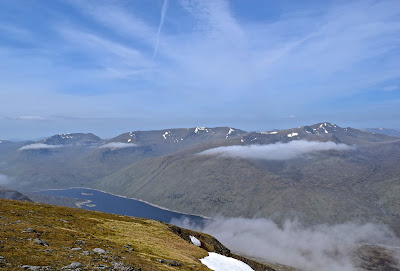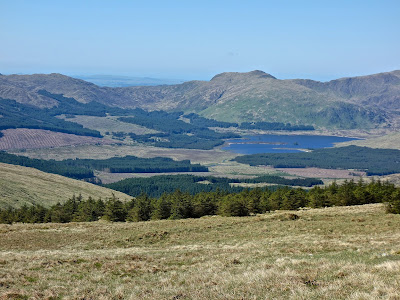The last twelve hours have been a trip down my memory lane of elections. As I watched the early results of the referendum come in, my returning officer antenna kicked in. I went to bed by 2am already pretty certain that Leave would win by 4 or 5% and said so to a friend who was texting me for updates because he had no TV reception in his hotel. I had heard that the tellers, who are normally very astute and meticulous observers of the count, were calling massive leads for vote leave in leafy Warwickshire as well as Southampton.
London and Scotland could never counterbalance this as well as the avalanche of leave votes that were emerging from industrial urban areas like Sunderland, the east of England and the stockbroker belt in Surrey and Hertfordshire. I woke up every couple of hours and checked the counts coming in. The leave vote was winning, the £ was crashing and the normally studiously balanced BBC reporters were becoming increasingly frazzled and giving vent to their feelings about the results. If only they had shared more of their views during the campaign. Unlike most politicians, celebrities and newspaper journalists, public service broadcasters still have some credibility. Unfortunately, BBC presenters seemed to base their objectivity on Brexit as a function of air time for the two sides rather than forensic analysis of the facts. We will come to regret this and the BBC have been as complicit as the Murdoch media, the Mail, Express and Telegraph in duping the electorate about false and unrealistic claims by the Leave campaign.
By 7am I was dozing and listening to the outcome on the radio. I have not felt this angry about an election result since May 1979 when Mrs Thatcher came to power with a stridency that was ominous. She had crafted a small-minded narrative that trashed the trade unions and by association the Labour Party with a mission to undermine public services (sic). Now the narrative had cast the European Union as the organisational victim. This time the cocktail of deceit had an unhealthy dose of xenophobia and an anti-establishment vendetta added to the mix. It was the leave members of the establishment: Farage, Johnson and Gove who were trashing the very establishment that they inhabited to cultivate support from those communities who had suffered most from the recession and austerity measures of the past 8 years.
It was no surprise when the prime minister resigned. He has always been a lucky politician and knows better than anyone that the next few years will be a period of political, economic and cultural chaos. He knew that the pent-up venom of European leaders, the city and half the population would be directed at the man who thought it was a good idea to have a referendum. As an institutional coward and serial survivor, he needed to pass the baton of leadership to the Brexit gang.
Cameron had the good fortune to replace unpopular Tory leaders Iain Duncan Smith and Michael Howard; this made him seem both modern and statesmanlike. His opponent in 2010 was Gordon Brown who had little voter appeal and was widely, but wrongly, blamed for the 2008 crash. Cameron duped Nick Clegg to be his fall guy in the coalition government and then stole back the Lib Dem vote in 2015 when they took the stick for the more damaging government decisions. Ed Miliband, his opponent in 2015, was crucified by the PM's friends in the press. In the referendum, his luck and the trust of the electorate was already exhausted. He had been besmirched by his father's promotion of tax havens and the press was against him by a 4:1 ratio. The brutal but apparently benign ambition of Boris Johnson was his nemesis. Johnson, in typical fashion, exuded his much-vaunted but dubious charisma that conceals his woeful lack of humanity, duplicitous nature as well as his myopic vision.
So what now?
Cameron and Osborne's replacements will probably be Bo & Go who are as much part of the establishment as Cameron and Osborne despite having attacked the bankers and the unequal distribution of wealth during their fetid campaign with all the sincerity of Big Brother contestants. Despite their attempts to dump Farage, he will continue to intervene and claim "it was me wot done it" with the regularity of a cuckoo clock.
No doubt the SNP will announce plans for another Indy referendum and, if successful, Scotland would inherit a devolved budget that is even less than George Osborne had planned for the next 4 years. The only way of making further significant public expenditure savings will be to target pensions, maybe this will be a nemesis for the age group that has voted for Brexit.
Potentially the most important outcome will come from a realignment of the progressive parties. The Labour Party is on the verge of meltdown already and the Lib Dems can't become much less popular. The Greens are admired for their principles but make little impact in the representative democratic game of thrones. The mood of the younger voters and many concerned older voters, including the baby boomers, could lead to them abandoning the old party labels and voting for the most progressive candidates. An alliance of the socially liberal, environmentalists, communitarians, media savvy and globally aware. Social media could fuse them together in a movement that defies political labels. It could provide a dynamic political agenda that challenges global corporations and creates a wiser, safer, more peaceful and ethical worldview. One that will never occur through the prism of the current political parties that are driven by their careerist members more than their relevance to the rapidly changing economic, social and environmental circumstances of today.
And as for Europe, well it too will have to think again. The austerity in Greece, Portugal, Spain and other countries has already resulted in the increasing presence of new left-of-centre organisations such as Podemos in Spain or Syriza in Greece. But elsewhere in France, Austria and some of the former Soviet bloc countries such as Poland and Hungary right-wing nationalist groups are growing in influence on the back of the refugee crisis. The existing centre parties are in danger of suffering the same fate as the Remain camp. They are seen as the euro-establishment and the custodians of a stagnating and unequal Europe.
The EU must abandon its neo-liberal stance, tackle the refugee crisis with a modicum of humanity, get to grips with corporate tax evasion and give a lead on environmental matters and climate change if it is to survive the contagion of Brexit. In other words shift the paradigm of its operation from political and economic integration with an unhealthy subservience to the global corporates towards a more ethical, social, cultural, and environmental focused organisation that truly integrates and supports the people of Europe. Is it possible, maybe and dropping TTIP would be the icing on the cake.
You may say I'm a dreamer
But I'm not the only one
I hope someday you'll join us
And the world will be as one


































